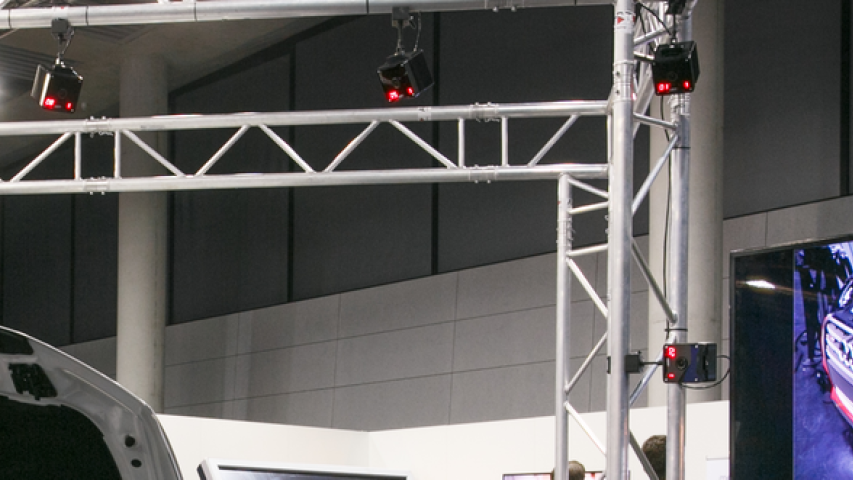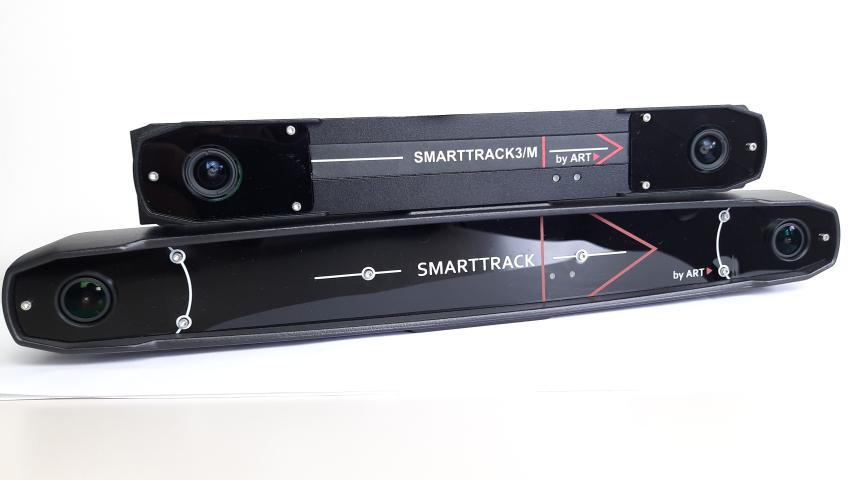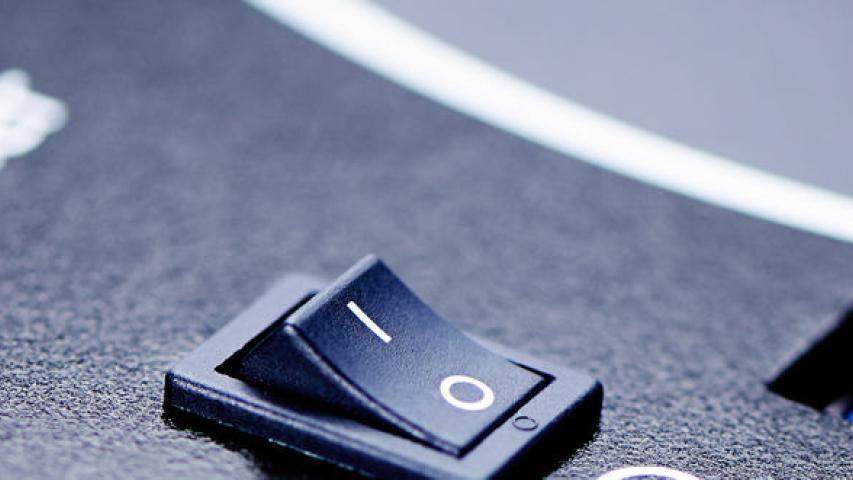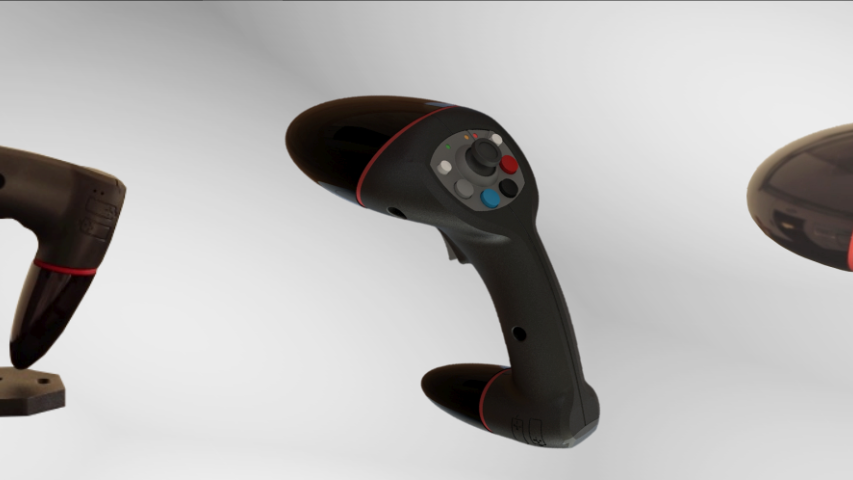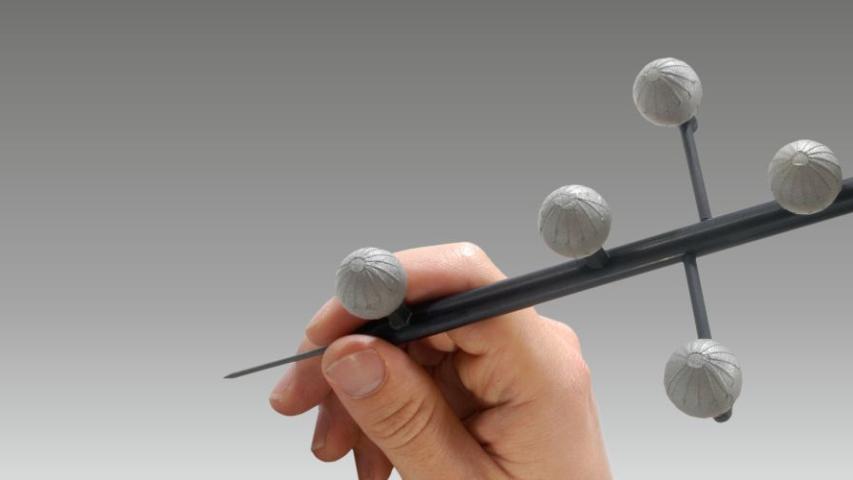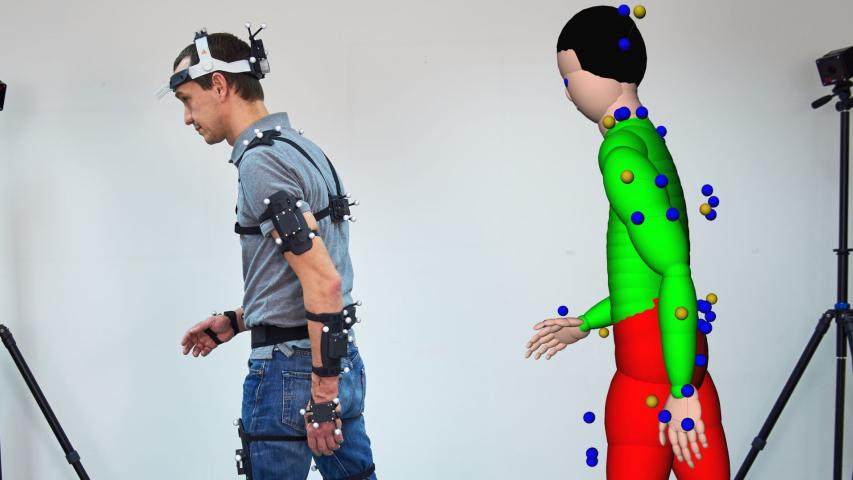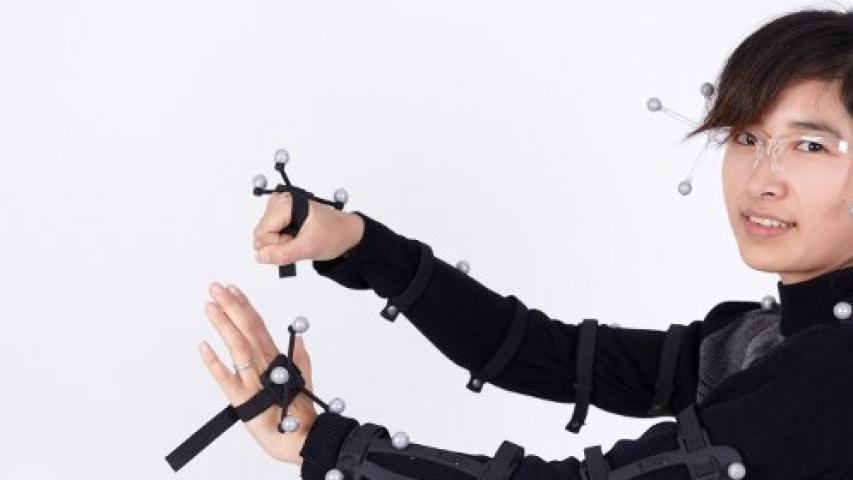Active and passive versions available
Active markers are infrared light emitting elements, mostly LEDs. All active markers provided by ART are just emitting radiation when the tracking cameras are sensitive, thus have to be synchronized with the cameras. Synchronization can be done by a wired connection between the tracking system and the electronics controlling the active markers, but can also be done in a wireless way: For wireless synchronization a coded IR flash is sent out by at least one tracking camera. The active markers’ electronics recognize the coded flash and activate the LEDs.
Passive markers: The special retroreflective material of our passive markers reflects light, in this case the timed infra-red flash from the cameras, which allows our motion tracking systems to accurately detect and track the marker's position.
Both active and passive markers will give 3DOF (3 degrees of freedom) for one single marker and 6DOF (resp. 5DOF) for a complete target (4+ markers).
Active Markers
In ART tracking systems different types of LED-based active markers are used, depending on the application.
All active markers provided by ART are controlled by special electronics that ensure synchronization with the tracking cameras and require a power supply.
Active markers are often a good choice when working in environments where strong reflections from IR flashes or non-specific reflections from sunlight occur.
Active LED markers without housing
- Simple markers with a small design
- Range with vertical radiation up to 20m
- Visibility angle up to +- 80°
- Applied to a mini circuit board (dimensions: 6 x 6mm)
- Electronics required for synchronization: AMC (see below)
- Cable length between marker and electronics max. 30cm
Active LED markers with diffuser
- LED marker
- Light-scattering surface
- Range with vertical radiation up to 20m
- Visibility angle up to +- 80°
- Diameter: diffuser 10mm, total diameter 14mm, height: 6mm
- Electronics required for synchronization: AMC (see below)
- Cable length between marker and electronics max. 30cm
AMC (Active Marker Controller) for active markers
The AMC receives an optical or wired synchronization signal from the tracking system and activates the LED markers. Up to 6 active markers can be connected to the AMC. A power supply of 3-5 V is required.
Passive Markers
The passive markers most commonly used in tracking systems, including ART’s, are retroreflectors (see picture below). These markers reflect incoming IR radiation back in the direction of the incoming light.
More precisely the IR radiation is back-reflected into a narrow range of angles around the source of the incoming light. These markers are mostly spheres covered with retroreflecting foils, but can also be stickers made from retroreflecting material.
Retroreflecting sheets or foils available on the market can be based on two different optical principles:
- Three mirrors, arranged in 90° angles to each other, reflect light in the described way. Mostly foils with arrangements of lots of very small mirrors in a plane are used.
- Glass balls (with appropriate refraction index) focus incoming light onto the opposite surface of the ball. A layer of microscopic glass balls, carried by a reflecting material, acts as a retro reflector. These foils can be fabricated on a flexible carrier material, thus they are widely used for equipping spherical markers with retroreflecting surfaces.
Spherical Markers
Spherical markers are plastic spheres with a centric M3 threaded insert, which are coated with a highly retro-reflective film.
Some of them are also available as a protected version with a robust surface. We provide these robust markers in the following sizes: 14 mm and 16 mm.
Available sizes (mm/inch): 6.4 (0.25), 7.9 (0.31), 12 (0.47), 14 (0.55), 16 (0.63), 20 (0.79), 30 (1.18).
Flat Markers
Flat markers are pre-cut circular pieces of self-adhesive retro-reflective film.
Available sizes (mm/inch): 10 (0.39), 12.5 (0.49), 15 (0.59), 20 (0.79).
Ring Markers (Cylindrical Markers)
Ring markers allow 5DOF tracking of cylindrical objects. They can be used, for example, for tracking of 3D glasses or of VR input and drawing pens, as well as for more precise detection of the working points of tools with extensions. For more information regarding these applications, simply contact us here.










